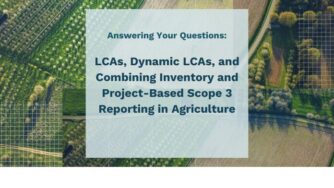Regenerative agriculture has been heralded by scientists, policymakers, farmers, as a way to scale approaches that significantly help to improve the environmental impact of farming. However, to solve the world’s regenerative agriculture transition, you have to start with science. That’s why CIBO has paired a scalable technology approach with a science-based understanding of cover crops. With CIBO, users can get insight into finding and managing land insights at scale for any U.S. parcel, field, or farm for those committed to improving their global footprint.
Under regenerative management US row crop land can sequester 350 M tonnes of CO2e a year for an estimated market value of more than $5 billion. The carbon sequestration and GHG mitigation capabilities of regeneratively managed farmland has not gone unnoticed. Corporations and individuals are beginning to recognize and act on the carbon sequestration potential of farmland and the win-win opportunity offered by regenerative practices.
CPG companies with strong ties to growers– like General Mills and Danone– are actively promoting the adoption of these practices within their supply chains, and technology companies– including Microsoft, Apple, Amazon and Shopify– are making good on their carbon neutral commitments by purchasing carbon credits derived from farmer’s regenerative practices. One key practice that is gaining momentum is adding cover crops to a farm’s rotation.
When implemented correctly, cover crops have many farm benefits from reduced soil erosion, improved water infiltration, greater weed and pest suppression, and lower nutrient loss. Cover crops can also lead to greater soil carbon sequestration by trapping carbon in the soil. As more links between soil health and the environmental benefits of using cover crops increase, Federal and State government agencies are looking for more ways to help grow these environmentally beneficial initiatives. Download this article to uncover the different types of cover crops and how they improve soil health and productivity.



